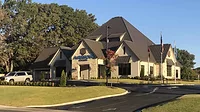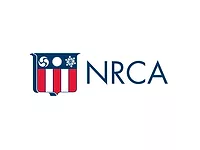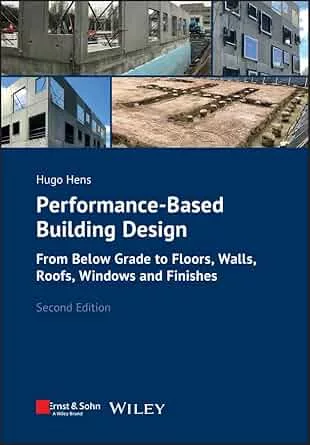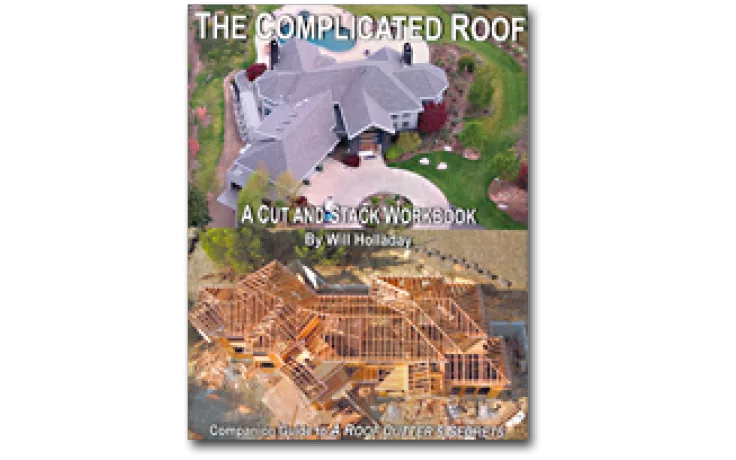Metal Roof Panel Finishes and Coatings
The success of a metal roof system depends on its ability to resist rust and corrosion. Rust and corrosion compromise a metal roof’s waterproofing ability, detracts from its physical appearance and reduces its service life. Technology has advanced to the point where modern metal finishes not only offer aesthetic value, they also protect the roof panels from moisture and pollution. There has also been advancement in the formulations of paints and coatings used in the maintenance of metal panels. These coatings can extend a metal roof’s service life.
Metal panel finishes must be durable enough to withstand peeling, cracking, and discoloring for a reasonable period of time. The finishes must also provide superior fade resistance, particularly in areas with large concentrations of sun and continual ultraviolet exposure. UV radiation can be especially destructive to metal panels, chiefly on darker colors such as red and blue.

Anticorrosive Coatings
There are three types of anticorrosive coatings used as metal roof panel finishes: zinc, aluminum and a combination of aluminum and zinc. Both aluminum and zinc are applied over the metal by the hot-dip process, which is detailed in ASTM specification A 924-94.Zinc coating is commonly found in galvanized steel and relies primarily on a chemical reaction of zinc, which slowly melts away while protecting the underlying metal. Generally, the thicker the layer of applied zinc, the greater the protection to the metal. A coating that conforms to ASTM standard A-653 with a G60 or G90 designation is adequate for most roofing applications. Galvanizing the metal provides an additional barrier against the elements and produces a white film over the metal from zinc oxidation. Zinc-coated metal exhibits two types of finishes: mill galvanized steel, which has a spangled, shiny finish; and hot-dip galvanized steel, which has a rough and dull finish. Hot-dip galvanized panels are reported to lose approximately a half mil of coating thickness every five years.
Aluminum coating differs from zinc coating in that it acts primarily as a physical barrier that is formed by the aluminum oxidation process. ASTM A-463 specifies that the minimum weight of aluminum coating for metal roof panels is 0.65 ounces per square foot on both sides of the metal panel. Aluminized steel exhibits an even, matte finish.
Aluminum-zinc coatings combine the chemical action of zinc and the barrier protection of aluminum. There are two types of compositions of combined aluminum-zinc coatings. The most common type used is Galvalume, which was developed by the Bethlehem Steel Corp. Galvalume is described in ASTM A-792 as a make-up of 55 percent aluminum, 43.5 percent zinc and 1.5 percent silicone. Galvalume sheets are available in commercial, lock-form and structural grades. Each grade can have one of three coating weights: A250, A255 and A260.
The most popular coating weight is A255, which weighs 0.55 ounces per square foot. The Galvalume-coated sheets look like a cross between galvanized and aluminized steel. Studies have indicated that Galvalume provides excellent long-term corrosion resistance and can last two to four times longer than galvanized coating.
The other aluminum-zinc coating is Galfan, which is made of 95 percent zinc and 5 percent aluminum as specified by ASTM A-875. The Galfan finish is difficult to distinguish from pure galvanizing. Galfan coated steel is particularly suitable for applications involving field bending and forming of the panels, because it is unaffected by the cracking and flaking common with hot-dip galvanized coatings.
No matter how good the finish coating, most corrosion in roof panels occurs at field-cut edges. Despite the fact that zinc can extend its healing properties to cut edges, it is still best to require that all roofing be factory trimmed and finished. In areas where cuts must be made during roof application, a factory-supplied touch-up compound should be applied to improve the roof’s resistance to corrosion.
Metal roof panels with aluminum and zinc coatings should not be placed in direct contact with any unprotected steel to eliminate possible galvanic action. Contact with a chemically treated wood decking should also be avoided because it can damage the metal finish. In these cases, an underlayment should be applied over the metal surface as a separator.
Paint Coatings
Metal roof panels with anticorrosive coatings applied to them are rarely left unexposed. For aesthetic purposes and the need for another layer of protection, a durable paint finish is applied over the panels during the manufacturing process. Paints for metal roofs are predominately based on organic or carbon compounds, such as polyester, acrylic and fluorocarbon.Acrylic- and polyester-based paints are synthetic polymers, which have a durable, abrasion-resistant surface. Manufacturers of these products typically offer three- to five-year warranties. If the paint on the metal panels is factory-applied, maintenance and repair coatings should be considered for application within the first five years. A slightly better paint product is a silconized polyester blend that provides good chalk resistance and gloss retention. Silconized polyesters are offered with 10- and 20-year warranties.
Fluorocarbon-based paints are made with a polyvinylidene fluoride resin (PVDF). The PVDF resin is an exceptionally stable compound that provides extraordinary durability, color stability and resistance to ultraviolet radiation, heat and chalking. The finished surface is dense, smooth and stain-resistant. This type of coating, which is sold under the trade names of Kynar 500 or Hylar 5000, is made with 70 percent resin and 30 percent pigments and solvents. Studies have indicated exceptional performance, particularly in severe climates, such as in the intense Florida sun and salty air. The typical warranty for these paints is 20 years and the standard application rate is 1 mil or 0.025 mm thick.
Coatings for Metal Roof Maintenance
The paints and coatings applied during manufacturing eventually lose mil thickness and their protective capacities. When this inevitable condition occurs, the application of maintenance coatings is required. Coatings used for maintenance and after-market applications must posses similar attributes to paints and coatings applied during the metal manufacturing process. The coatings must be able to protect the metal surfaces from the elements: UV radiation, rain, snow, ice, and pollution and other airborne contaminants. The purpose of the coating is to prevent metal surface degradation such as rust and corrosion.Prior to the application of maintenance coatings, all required repairs should be completed. Initial repairs should be attempted at fasteners, seams and laps. There are a number of products available for repairs in these areas. Fasteners are typically waterproofed with sealants or compounds. Seams and laps can be waterproofed with a combination of fabric, such as polyester, applied in a flashing compound, such as high-solids acrylics.
Once the repairs are completed, preparation of the metal surface is required. The metal surface should be thoroughly power-washed. Rust and corrosion should be treated with a rust inhibiter after all loose rust is scrapped from the surface. When the preparation is completed, the metal coating should be applied in accordance with the manufacturer’s latest printed specifications in reference to application rates and requirements.
Most coatings used for metal roof maintenance are acrylic-elastomer-based reflective coatings. These coatings are available in high-solids formulations and can be VOC-compliant, with some manufacturers offering waterborne products. They are available in a variety of colors. Lighter colors (white, gray) are preferable for reflective ability. The application rate and number of coatings determines the type of warranty offered. Warranties range from one to 10 years.
The substantial increase in low-slope metal roof system applications over the last two decades has provided a new opportunity for maintenance and repair. New coating formulations and application equipment have contributed to the ease of these installations. The decreased labor force and economical material costs may add to profit on these projects and can add to the bottom line.
Looking for a reprint of this article?
From high-res PDFs to custom plaques, order your copy today!







